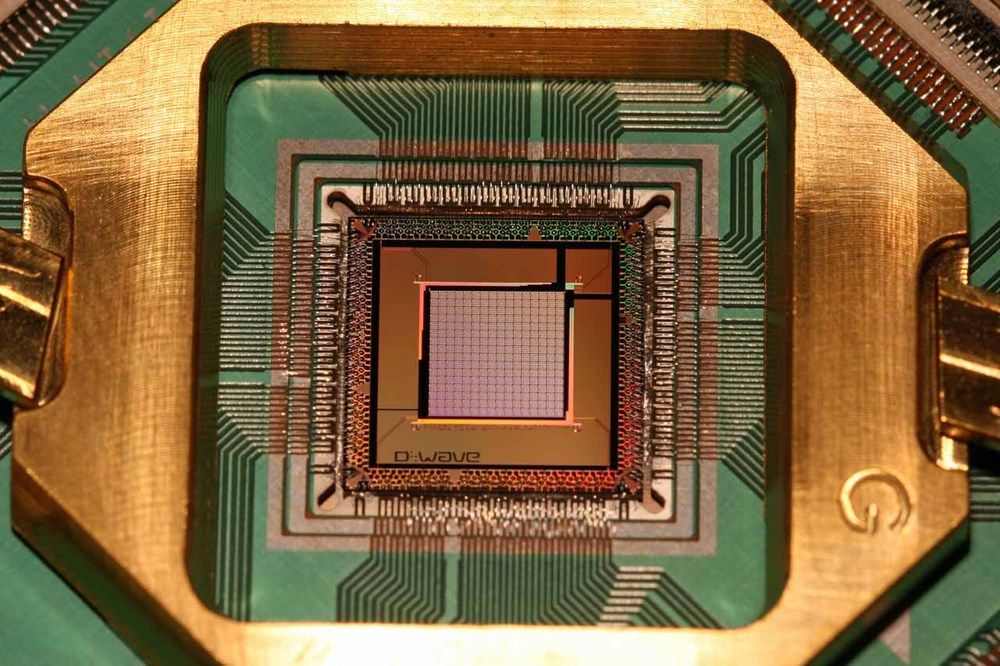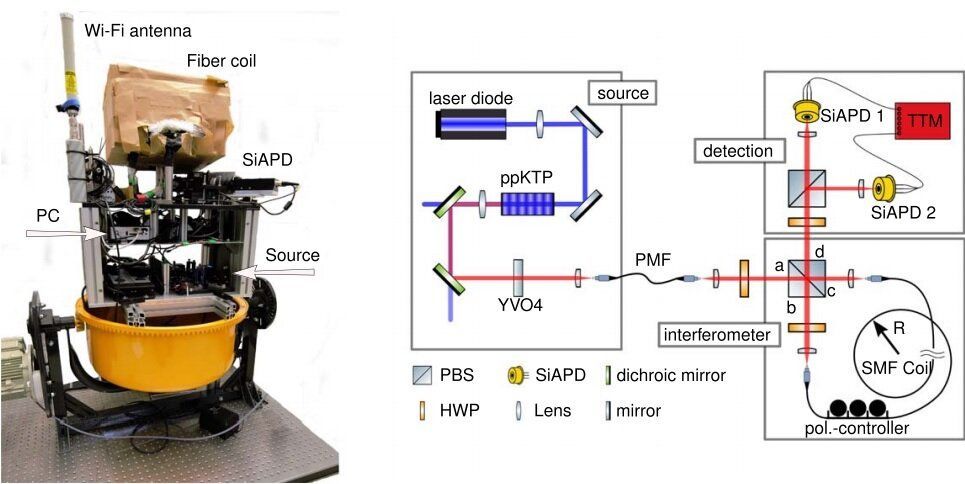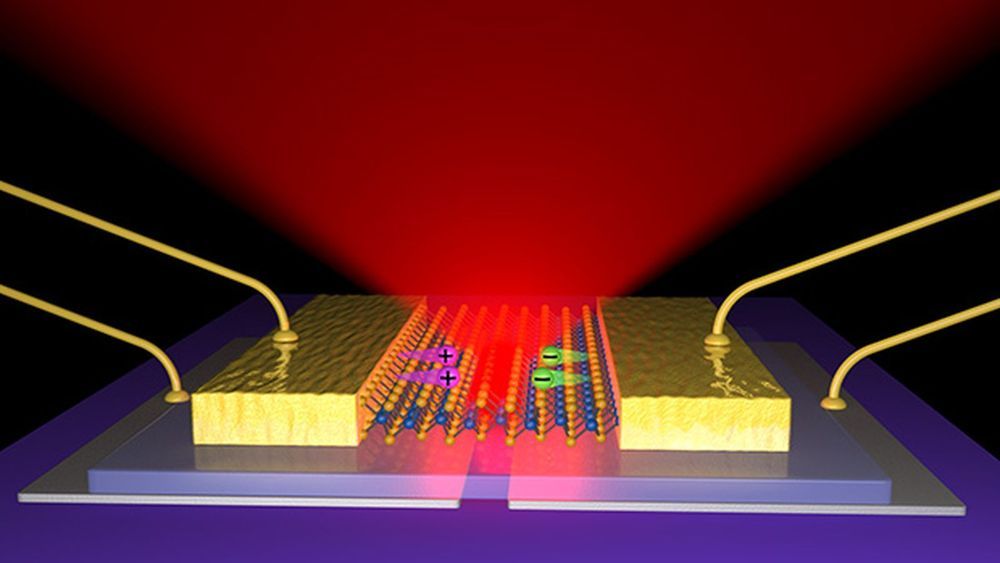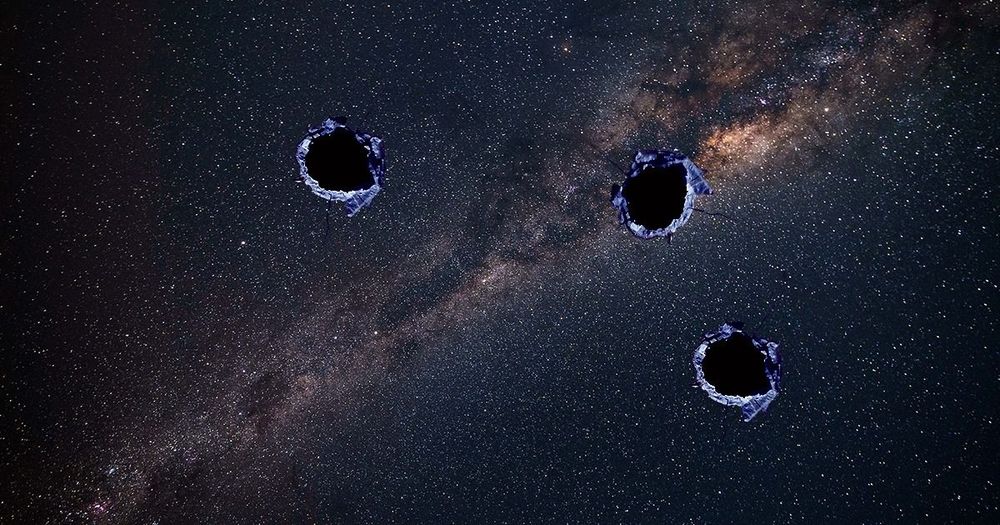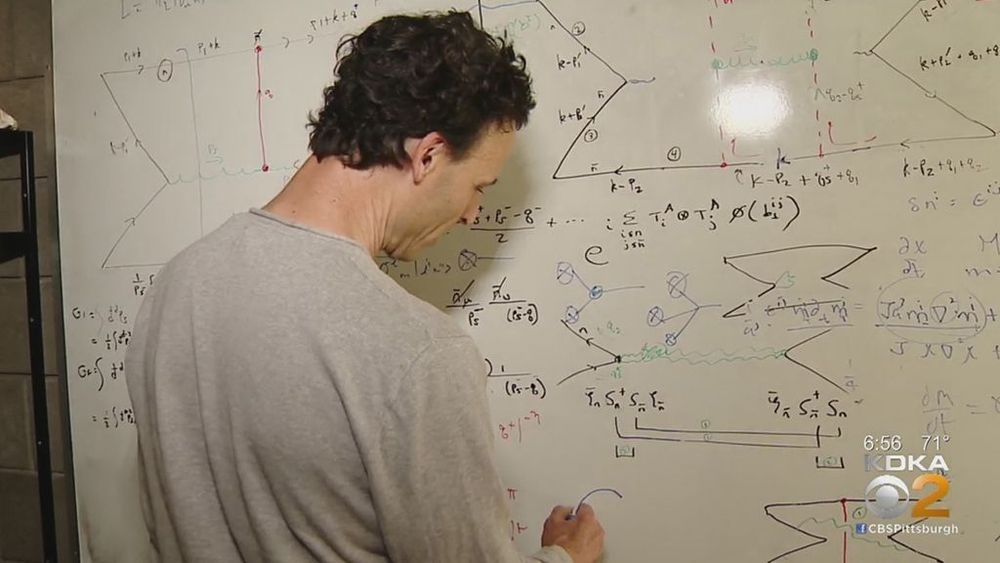Page 8807
May 16, 2019
Entangled-photon gyroscope overcomes classical limit
Posted by Quinn Sena in categories: quantum physics, transportation
Fiber optic gyroscopes, which measure the rotation and orientation of airplanes and other moving objects, are inherently limited in their precision when using ordinary classical light. In a new study, physicists have experimentally demonstrated for the first time that using entangled photons overcomes this classical limit, called the shot-noise limit, and achieves a level of precision that would not be possible with classical light.
The physicists, led by Matthias Fink and Rupert Ursin at the Austrian Academy of Sciences and the Vienna Center for Quantum Science and Technology, have published a paper on the entanglement-enhanced fiber-optic gyroscope in a recent issue of the New Journal of Physics.
“We have demonstrated that the generation of entangled photons has reached a level of technical maturity that enables us to perform measurements with sub-shot noise accuracy in harsh environments,” Fink told Phys.org.
Continue reading “Entangled-photon gyroscope overcomes classical limit” »
May 16, 2019
Holographic imaging of electromagnetic fields using electron-light quantum interference
Posted by Quinn Sena in categories: encryption, energy, holograms, quantum physics
In conventional holography a photographic film can record the interference pattern of monochromatic light scattered from the object to be imaged with a reference beam of un-scattered light. Scientists can then illuminate the developed image with a replica of the reference beam to create a virtual image of the original object. Holography was originally proposed by the physicist Dennis Gabor in 1948 to improve the resolution of an electron microscope, demonstrated using light optics. A hologram can be formed by capturing the phase and amplitude distribution of a signal by superimposing it with a known reference. The original concept was followed by holography with electrons, and after the invention of lasers optical holography became a popular technique for 3D imaging macroscopic objects, information encryption and microscopy imaging.
However, extending holograms to the ultrafast domain currently remains a challenge with electrons, although developing the technique would allow the highest possible combined spatiotemporal resolution for advanced imaging applications in condensed matter physics. In a recent study now published in Science Advances, Ivan Madan and an interdisciplinary research team in the departments of Ultrafast Microscopy and Electron Scattering, Physics, Science and Technology in Switzerland, the U.K. and Spain, detailed the development of a hologram using local electromagnetic fields. The scientists obtained the electromagnetic holograms with combined attosecond/nanometer resolution in an ultrafast transmission electron microscope (UEM).
In the new method, the scientists relied on electromagnetic fields to split an electron wave function in a quantum coherent superposition of different energy states. The technique deviated from the conventional method, where the signal of interest and reference spatially separated and recombined to reconstruct the amplitude and phase of a signal of interest to subsequently form a hologram. The principle can be extended to any kind of detection configuration involving a periodic signal capable of undergoing interference, including sound waves, X-rays or femtosecond pulse waveforms.
May 16, 2019
Skintight space suits are the order of the day for astronauts who hope to survive life on Mars
Posted by Quinn Sena in categories: 3D printing, alien life
Modular, 3D printed or skintight, the new space suits for life on Mars need to be comfortable and fiercely protective of the human inside.
May 16, 2019
Researchers create ‘thinnest possible’ LEDs at only three atoms thick
Posted by Quinn Sena in categories: futurism, particle physics
LEDs are already pretty tiny, but they just got a whole lot smaller. Researchers at the University of Washington have built what they say are the “thinnest-possible LEDs” — tiny lights that measure just three atoms thick. “Such thin and foldable LEDs are critical for future portable and integrated electronic devices,” Xiaodong Xu, co-author of a paper on the research that was published over the weekend in Nature Nanotechnology, says in a statement. At three atoms thick, the researchers’ LEDs are said to be 10 to 20 times thinner than conventional LEDs, opening up a number of potential new uses for them.
May 16, 2019
A “Dense Bullet of Something” Blasted Holes in the Milky Way
Posted by Quinn Sena in category: cosmology
O.o…
Scientists say that something mysterious punched gigantic, cosmic “bullet holes” in parts of the Milky Way.
There’s a string of holes in a long stream of stars called GD-1 that suggests that some yet-undiscovered thing blasted its way through, according to research presented to the American Physical Society last month and first reported by Live Science. Harvard-Smithsonian astrophysicist Ana Bonaca, the scientist who discovered the cosmic crime scene, suspects that the gigantic “bullet holes” may have been carved out by invisible dark matter.
Continue reading “A ‘Dense Bullet of Something’ Blasted Holes in the Milky Way” »
May 16, 2019
The Real Life Sheldon & Leonard: CMU Physics Professors Thank ‘Big Bang Theory’ For Making Love Of Science More Accepted
Posted by Genevieve Klien in categories: cosmology, science
Two Carnegie Mellon University physics professors thank “The Big Bang Theory” for making loving science more accepted.
May 16, 2019
Could gut bacteria explain the link between stress and autoimmune disease?
Posted by Genevieve Klien in category: biotech/medical
A mouse study shows that persistent social stress alters gut bacteria in ways that raise the likelihood of immune system attacks on the body’s own tissues.
May 16, 2019
New York’s First Proton Therapy Center to Open in July
Posted by Genevieve Klien in categories: biotech/medical, health
New York City is set to get a new radiation-treatment center, nearly a decade in the making, that uses proton beams to treat cancerous tumors.
Called the New York Proton Center, it is a for-profit partnership of Memorial Sloan Kettering Cancer Center, Montefiore Health System and Mount Sinai Health System, managed by the ProHEALTH company. Financing for the center was provided in part by the hospitals.
Item”].
Continue reading “New York’s First Proton Therapy Center to Open in July” »
